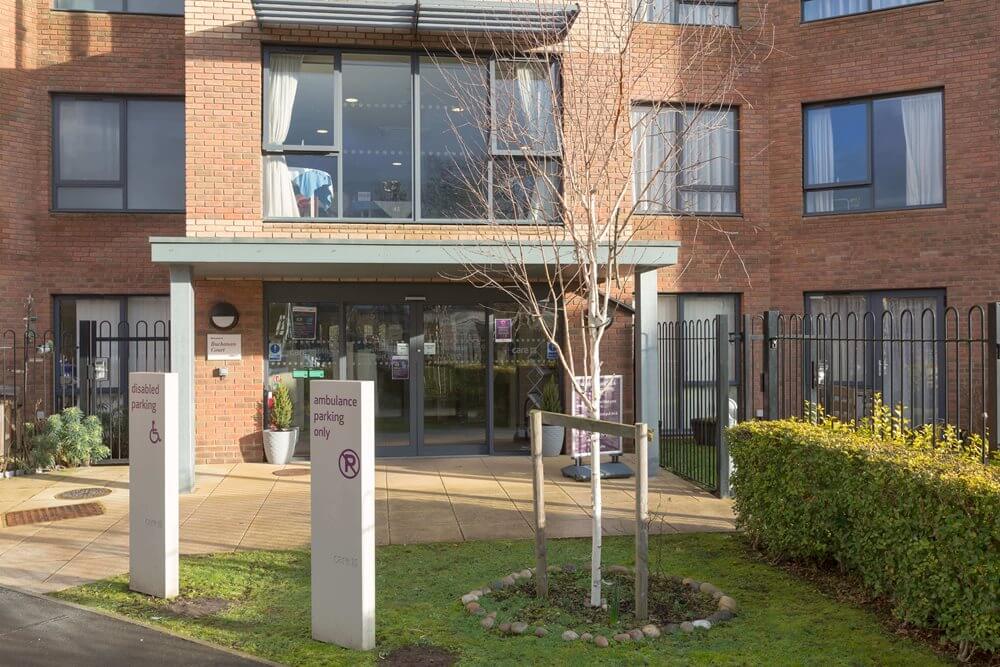Constructing a Safe Environment for Care Home Residents: A Guide to Safety-First Design
April 22, 2025

People who live in care homes are either elderly or vulnerable individuals. If there is any place that needs to be constructed safely, care home facilities would be the first place. Older adults who lack physical strength may lose control and fall on the surface. So, the building design must ensure the safety and security of all the people living in the care home. To build a safe environment for residents, planning and construction both should be in sync. Without a collaborative approach between the construction contractor and the designer, a safe environment cannot be created for the residents. In this blog, we will discuss why a safe environment is essential for older adults living in a care home. By the end of this blog, you will understand how to design a safe environment by modifying the lighting, floor design, and other factors.
Understanding Safety Needs in Care Homes
Before creating a safe environment for older adults in care home facilities, it is essential to understand the importance of safety in these settings. Individuals who are older or weaker may struggle to control their movements properly. If they fall on the ground accidentally, they might injure themselves. On the other hand, people with dementia and other cognitive issues may not feel comfortable in an unknown place. Design a layout of the building that is easier for them to remember.
Additionally, train caregivers to treat elderly individuals in care homes with greater passion and empathy. It will make them feel safer in the care home facility. You need specific construction materials to design a safe environment. Similarly, you need trained people to make the facility emotionally safe for individuals. Love, care, and affection towards old people make them feel secure. In such a welcoming environment, you see positive improvements.
Site Planning and Layout for Safety
When building a care home facility, remember to make it spacious to facilitate easy movement. Besides, all the facilities should be easily accessible. For example, the rooms where the residents will stay should not be far away from the community hall. Easier accessibility to various facilities, such as the community hall and washrooms, will ensure the authority of the residents. They will respond better to the treatment, which will help improve their overall well-being. However, try to separate the area for service-related work, such as cooking, washing, or medical facilities, from the residential area. It will help reduce the chance of accidents. Now, let's look at some materials that can help you build a safe environment for your care home.
Construction Materials That Promote Safety
As older people do not have proper control over their movement, they might lose their balance on slippery floors. Hence, installing non-slip floor tiles can help. You can install them in washrooms, corridors, or other suitable areas. To ensure that old residents do not injure themselves if they fall on the floor, proper cushioning can be done. You can use thick carpets as floor cushions. Install functional fire-controlling measures, sprinklers, and other tools to safeguard the residents.
Structural Features That Enhance Resident Safety
Before starting construction work on safe and secure care homes, consider the following tips.
a. Handrails and Grab Bars
Install them along the corridor or at the side of staircases. When moving from one place to another, these handrails and grab bars will help the resident move safely and securely. Even without direct supervision, they can go to the washrooms or the community hall.
b. Lighting and Visibility
Install energy-efficient lights in all the rooms and corridors for better visibility. Older people may have issues with their eyesight, and a dimly lit room or corridor can lead to accidents. Install energy-efficient lights to avoid accidents and ensure the safety of older individuals. Proper lighting in the corridor and on the staircase will ensure the safety of residents.
Safety-Integrated Design
You can install intercoms or an emergency calling system inside the care home facilities. If a resident experiences an emergency, they can contact the responsible person immediately through the intercom or the emergency calling facility. You should also install backup power facilities, such as generators or batteries, or utilise solar power to provide continuous electricity throughout the care home facility. A proper ventilation system is a crucial element of a care home facility. An appropriate supply of power will ensure residents are in a safe environment. For the plumbing, a temperature-controlled water system can help. In winter, they can access hot water and protect themselves from the seasonal flu.
Collaborative Design-Build Approach
Finally, you must maintain a collaborative approach among all stakeholders, including patient families, caregivers, builders, and other relevant parties. Builders and designers can collaboratively design a safe environment for residents. On the other hand, the families of the residents can make an important contribution to the design of the facility. They should also ensure that the building design is flexible enough to accommodate future modifications.
Conclusion
All the residents staying in the care home facility deserve to be safe and secure. First, we need to understand their needs and then design the care home facility accordingly. If they need a non-slip floor, design it accordingly. If grab rails and air-conditioned rooms are required, install them. The primary objective is to safeguard them and their authority. They can do it well in a physically and emotionally safe environment.
Recent Blogs
- How to Fund your Care Home Build?
- Outdoor Spaces in Care Homes: Why Gardens Aren’t a Luxury — They’re Essential.
- The Blueprint for Better Air Quality
- A New Way of Living for Elderly People: Blending Innovation and Technology in Care Homes
- Build or Renovate? Making the Right Choice for Your Care Home